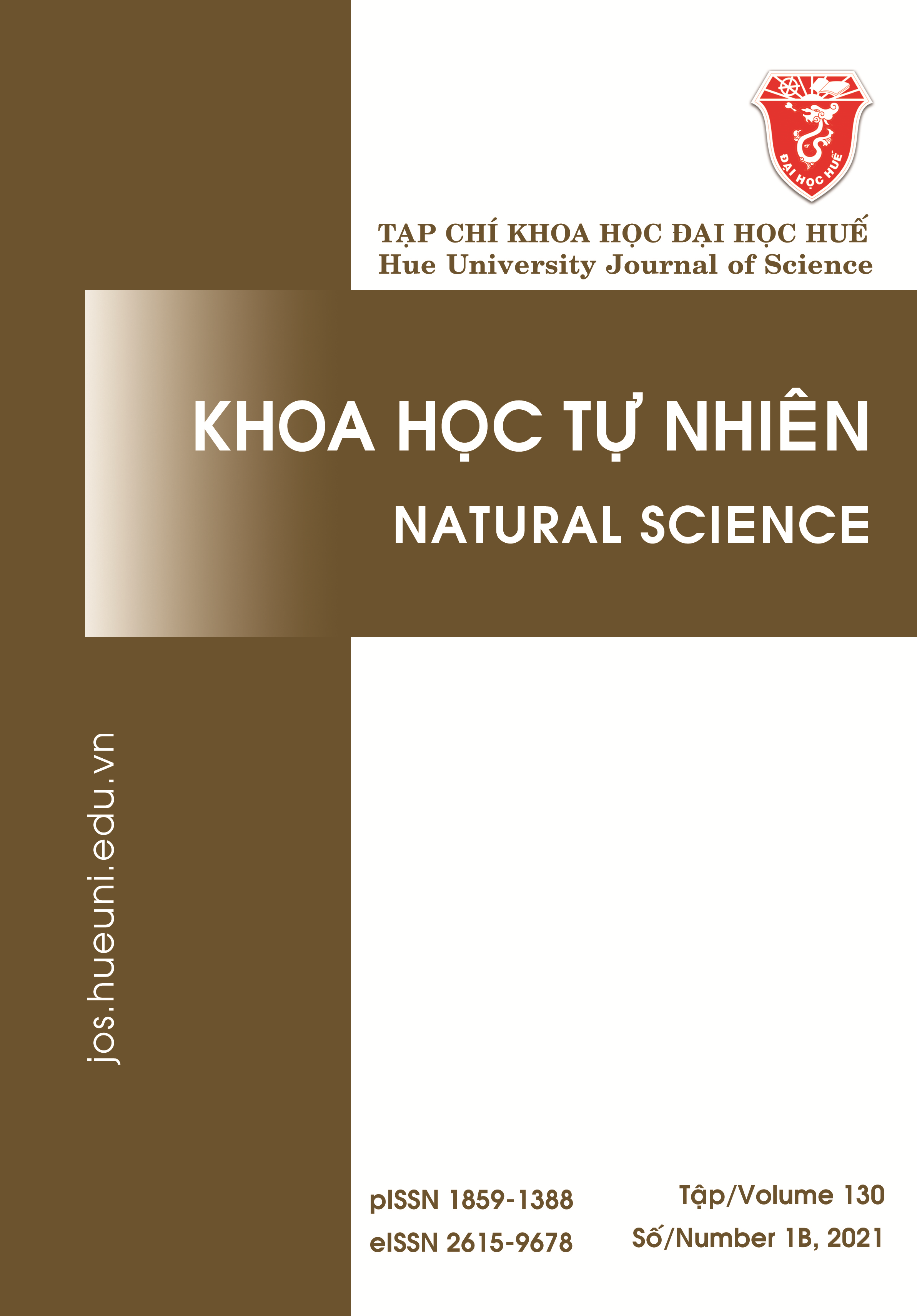Abstract
N-doped TiO2 nanomaterials were prepared with the sol-gel method. The structure and properties of the materials were characterized by using XRD, UV-Vis, SEM, EDX, and IR techniques. The optimal dose of ammonium chloride for doping is 600 mg. The optical absorption edge of N-TiO2 displays a redshift, and a long tail occurs in the presence of nitrogen in the material. Thereby, N-TiO2 may exhibit improved absorption properties under visible light and the solar irradiation. The photocatalytic activity was investigated on the degradation of rhodamine B. The optimal amount of the photocatalyst is 1.8 g/L under visible light.
References
- Li D, Qu J. The progress of catalytic technologies in water purification: A review. Journal of Environmental Sciences. 2009;21(6):713-719. DOI: https://doi.org/10.1016/s1001-0742(08)62329-3
- Jagadale TC, Takale SP, Sonawane RS, Joshi HM, Patil SI, Kale BB, Ogale SB. N-Doped TiO2 nanoparticle based visible light photocatalyst by modified peroxide sol−gel method. The Journal of Physical Chemistry C. 2008;112(37):14595-14602. DOI: https://doi.org/10.1021/jp803567f
- Akpan U, Hameed B. The advancements in sol-gel method of doped-TiO2 photocatalysts. Applied Catalysis A: General. 2010 02;375(1):1-11. DOI: https://doi.org/10.1016/j.apcata.2009.12.023
- Jafari S, Tryba B, Kusiak-Nejman E, Kapica-Kozar J, Morawski AW, Sillanpää M. The role of adsorption in the photocatalytic decomposition of Orange II on carbon-modified TiO2. Journal of Molecular Liquids. 2016;220:504-512. DOI: https://doi.org/10.1016/j.molliq.2016.02.014
- Zhang G, Zhang YC, Nadagouda M, Han C, O'Shea K, El-Sheikh SM, et al. Visible light-sensitized S, N and C co-doped polymorphic TiO2 for photocatalytic destruction of microcystin LR. Applied Catalysis B: Environmental. 2014;144:614-621. DOI: https://doi.org/10.1016/j.apcatb.2013.07.058
- Ansari SA, Khan MM, Ansari MO, Cho MH. Nitrogen-doped titanium dioxide (N-doped TiO2) for visible light photocatalysis. New Journal of Chemistry. 2016;40(4):3000-3009. DOI: https://doi.org/10.1039/c5nj03478g
- Suwannaruang T, Kamonsuangkasem K, Kidkhunthod P, Chirawatkul P, Saiyasombat C, Chanlek N, et al. Influence of nitrogen content levels on structural properties and photocatalytic activities of nanorice-like N-doped TiO2 with various calcination temperatures. Materials Research Bulletin. 2018;105:265-276. DOI: https://doi.org/10.1016/j.materresbull.2018.05.010
- Jadhav PS, Jadhav T, Bhosale M, Jadhav C, Pawar V. Structural and optical properties of N-doped TiO2 nanomaterials. Materials Today: Proceedings. 2021;43:2763-2767. DOI: https://doi.org/10.1016/j.matpr.2020.07.164
- Li G, Zou B, Feng S, Shi H, Liao K, Wang Y, et al. Synthesis of N-Doped TiO2 with good photocatalytic property. Physica B: Condensed Matter. 2020;588:412184. DOI: https://doi.org/10.1016/j.physb.2020.412184
- Su X, He Q, Yang Y, Cheng G, Dang D, Yu L. Free-standing nitrogen-doped TiO2 nanorod arrays with enhanced capacitive capability for supercapacitors. Diamond and Related Materials. 2021 04;114:108168. DOI: https://doi.org/10.1016/j.diamond.2020.108168

This work is licensed under a Creative Commons Attribution-ShareAlike 4.0 International License.
Copyright (c) 2021 Array




